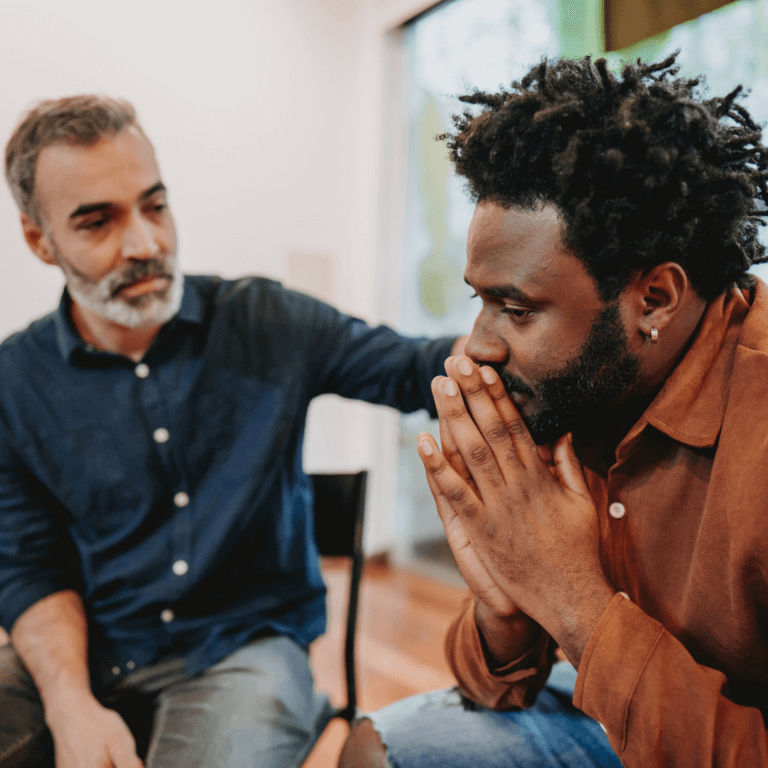Complementary therapies, like drumming, are used in recovery from substance use in many ways. They help to ease anxiety, promote relaxation, and provide feelings of comfort and vulnerability to begin the healing journey. The most common form of drum therapy is a drumming circle. This helps people in recovery connect with one another and develop deeper bonds. The inclusiveness of a drum circle combined with the lack of fine motor skills required and a primal driving rhythm make drum therapy accessible to everyone. Drum therapy is very versatile and easily fits in with any wellness practices, and it’s fun. What could be more uplifting than a group of people playing music, singing, dancing, and laughing? Drum circles can be any size, include all ages, and be practiced in many environments, not just in a clinical setting. Drumming is fun to learn, and it can support growth and healing in people recovering from a substance use disorder.
What Is Drum Therapy?
Drumming has been a tool for communication, celebration, and expression for thousands of years. Most recently, it has been gaining popularity for its positive effects in substance use disorder recovery circles. Drum therapy is meant to be a fun release of stress and anxiety in the recovery journey. Therapists or counselors trained in drumming will lead a drumming circle and offer assistance to those new to the practice. The participants sit in a circle with various drums and percussion instruments while taking instruction from the therapist. When it comes to drums and percussion, there really are endless instruments and ways to include everyone. Hand clapping, foot-stomping, and even singing or vocalizations can be used in a drum circle. With regular practice, drumming circles can work together to play standard rhythms from different cultures, pieces of percussion music, or develop their own patterns and beats. Co-creating and sharing joy with others provides immeasurable physical, mental, and emotional benefits, of which modern Western medicine is just now beginning to realize and study.
Why Drum in Recovery
According to Dr. Barry B. Bittman, drumming circles help boost the immune system and promote physical healing. Drum therapy encourages people to release inner trauma through physical movement and meditative rhythms, as well as bringing people together. The drum circle can be a safe space where participants can express themselves and interact through percussion on an even playing field. Nonverbal communication and bonding with others make for a comforting and gentle community experience. That sense of community fosters critical human connections that contribute to a person’s overall well-being. Drumming is primal and awakens the human desire to move and physically express oneself, making dancing, and movement unavoidable. When people are moving in beat with the music, they release their inner emotions as well as stress, and some are even able to go into a meditative state. Although people might be intimidated in a group setting, it is essential to remember the focus is on themselves and the drum at that moment. It typically involves them focusing on their individual recovery and working together as a team to communicate how to make the drum circle go smoothly. Drumming allows participants to lose themselves in meditation as they drum, and enjoy that calm mindfulness it brings.
Amazing Benefits
Drumming has a myriad of benefits for people, especially in recovery. Those in recovery from substance use disorder may struggle with anxiety, stress, PTSD, and other general mental health concerns. Through group drumming therapy, people can open themselves up to a vulnerable place that allows for more significant healing and greater understanding. Feelings of isolation and disconnection are common in our modern world, dominated by screen time and social media. A drum circle can help repair those connections and bring people a new sense of belonging and inclusion. Only in the past few years has science and medicine been more open to the holistic approach of drum therapy and studied its benefits in clinical and social studies.
A 2016 group therapy drumming study discovered and documented many benefits of drumming, including:
- Stress reduction.
- Relief of chronic pain.
- Immune system booster.
- Deeper awareness.
- Access to parts of the brain for healing and mindfulness.
- Connection with nature, a spiritual source, or higher power.
- Release of emotions, trauma, and negative feelings.
- Being part of a whole.
- Sense of belonging.
The reasons people practice drumming therapy vary, but it can be offered to anyone in recovery or as an optional practice of healing. Outside of rehabilitation and treatment, some places and people offer recovery circles. With so many benefits, there are reasons to think it might offer something to everyone who gives it a try. Holistic therapies don’t often get a lot of attention, but they can be helpful as a therapeutic tool. In addition to regular psychological treatment, it can be quite beneficial to invest in the opportunity to engage with drumming, both in treatment and in aftercare programs.
Ashley Addiction Treatment is an innovative treatment program located on Maryland’s Chesapeake Bay. Ashley provides support for professionals seeking help with addiction. We are able to help people with co-occurring disorders and offer confidential treatment programs to meet your needs. Please reach out to us today at 800-799-4673.



